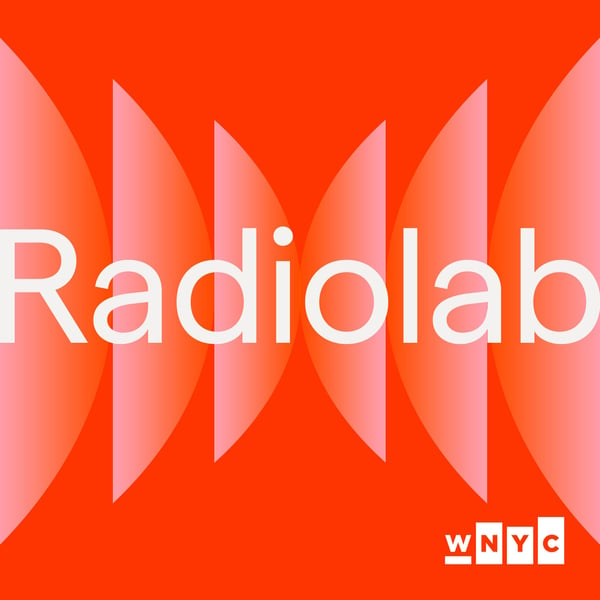Touch at a Distance
Radiolab
WNYC Studios
4.6 • 43.5K Ratings
🗓️ 1 September 2023
⏱️ 52 minutes
🧾️ Download transcript
Summary
In this episode from 2007, we take you on a tour of language, music, and the properties of sound. We look at what sound does to our bodies, our brains, our feelings… and we go back to the reason we at Radiolab tell you stories the way we do.
First, we look at Diana Deutsch’s work on language and music, and how certain languages seem to promote musicality in humans. Then we meet Psychologist Anne Fernald and listen to parents as they talk to their babies across languages and cultures. Last, we go to 1913 Paris and sneak into the premiere of Igor Stravinsky’s score of The Rite of Spring.
Check out Diana Deutsch's 'Audio Illusions' here (https://deutsch.ucsd.edu/psychology/pages.php?i=201).
Our newsletter comes out every Wednesday. It includes short essays, recommendations, and details about other ways to interact with the show. Sign up (https://radiolab.org/newsletter)!
Radiolab is supported by listeners like you. Support Radiolab by becoming a member of The Lab (https://members.radiolab.org/) today.
Follow our show on Instagram, Twitter and Facebook @radiolab, and share your thoughts with us by emailing [email protected]
Leadership support for Radiolab’s science programming is provided by the Gordon and Betty Moore Foundation, Science Sandbox, a Simons Foundation Initiative, and the John Templeton Foundation. Foundational support for Radiolab was provided by the Alfred P. Sloan Foundation.
Transcript
Click on a timestamp to play from that location
| 0:00.0 | Hey, it's Lulu. To start today, I want to play you a sentence that I heard 20 years ago that |
| 0:07.9 | changed the course of my life. Sound is kind of touch at a distance. |
| 0:16.0 | I was 21 years old, living in Queens, working at a coffee shop, more than a little lonely, |
| 0:22.5 | unsure what I was doing with my life, and boom. Sound is touch at a distance. |
| 0:28.2 | Those six eerie words floated out of the radio. I didn't know it yet, but it was this brand-new show |
| 0:36.4 | called Radio Lab that was doing something with sound and layering and music that almost |
| 0:43.0 | no one was yet bringing to journalism. That episode would then go on to do this very meta thing |
| 0:49.5 | of explaining how the words that were being spoken right then were just waves of vibrating air, |
| 0:55.6 | traveling across space and time into my ear drum. Which vibrates a few very small bones. |
| 1:06.5 | And the little bones transmit the vibration into this salty sea, |
| 1:11.4 | where the hairs are. And the hair cells are literally bent by way. |
| 1:18.8 | They bend like trees and breeze. |
| 1:20.9 | And when these hair cells bend, charged molecules flood inwards and activate the cell. |
| 1:31.4 | And it was like, I felt it. This stranger's voice had just made contact, literal contact with me. |
| 1:42.0 | And in that moment, I knew that was my path. I wanted to get into that world and use that medium |
| 1:48.4 | to do that thing. 20 years later, I still feel so lucky to be part of this show where every week |
| 1:56.8 | we send out sounds. And voices. And experiences. |
| 2:12.0 | And emotions. |
| 2:18.3 | I play about monsters every night. That, you know, actually touch you. |
| 2:33.8 | And look, I think in a moment like right now, when so many of us feel divided across space, |
| 2:41.2 | across geography, across ideology, I think sounds potential to sneak in and connect. |
| 2:50.6 | I think it really matters. But the truth is, and the reason I am here yammering about all this, |
... |
Please login to see the full transcript.
Disclaimer: The podcast and artwork embedded on this page are from WNYC Studios, and are the property of its owner and not affiliated with or endorsed by Tapesearch.
Generated transcripts are the property of WNYC Studios and are distributed freely under the Fair Use doctrine. Transcripts generated by Tapesearch are not guaranteed to be accurate.
Copyright © Tapesearch 2025.

